
Welcome to the biweekly electronic newsletter from Stanford Bio-X for members of the Bio-X Corporate Forum. Please contact Dr. Hanwei Li, the Bio-X Corporate Forum Liaison if you would like to be added or removed from this distribution list, or if you have any questions about Stanford Bio-X or Stanford University.
Highlights
** On October 9, 2013, Bio-X celebrated the 10th Anniversary of the James H. Clark Center, the hub of Bio-X. Check out CLARK CENTER @ 10X as well as the Bio-X Timeline over the last 15 years!!
** Check out the article by Stanford President John Hennessy in the Nov/Dec 2013 issue of the Stanford Magazine on Bio-X and the Clark Center, "A Cauldron of Innovation".
Bio-X Core Programs
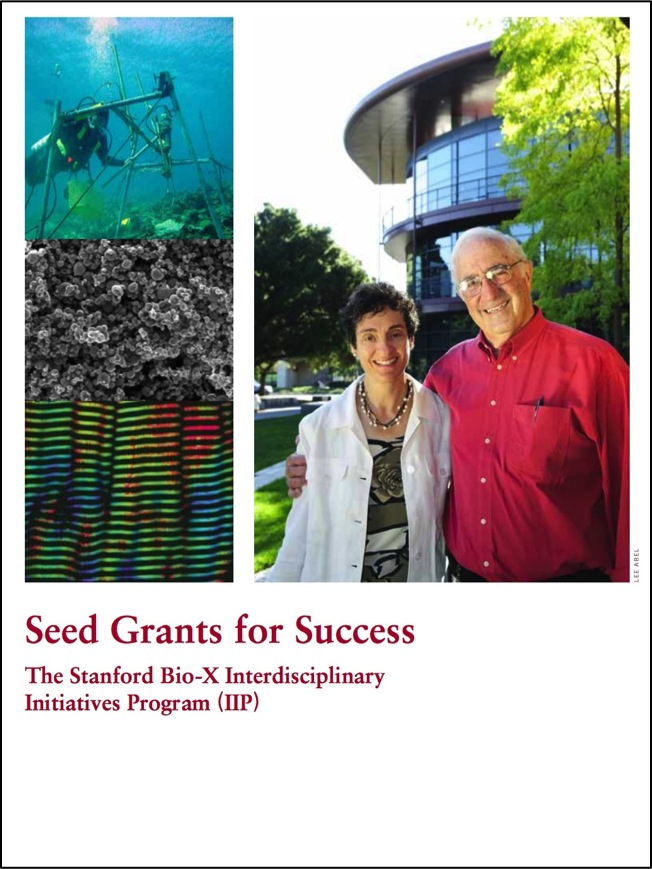 SEED GRANTS FOR SUCCESS - Stanford Bio-X Interdisciplinary Initiatives Program (IIP) SEED GRANTS FOR SUCCESS - Stanford Bio-X Interdisciplinary Initiatives Program (IIP)The Bio-X Interdisciplinary Initiatives Program represents a key Stanford Initiative to address challenges in human health. Currently, the IIP awards approximately $4 million every other year in the form of two-year grants averaging about $200,000 each. From its inception in 2000 through the beginning of the seventh round in 2014, the program has provided critical early-stage funding to 164 different interdisciplinary projects, involving collaborations from over 750 faculty members, and creating over 700 teams from six different Stanford schools. From just the first 6 rounds, the IIP awards have resulted in a 10-fold-plus return on investment, as well as hundreds of publications, dozens of patents filed, and most importantly, the acceleration of scientific discovery and innovation. 2014 is the start of the 7th round of the Bio-X IIP Seed Grants Program, and 22 newly awarded projects were selected from 142 Letters of Intent (LOIs)! This has been the largest number of LOIs that Bio-X has received. Please go here to check out the newly awarded projects. Competition was intense, and the selection criteria included innovation, high-reward, and new interdisciplinary collaborations. (To view the 142 other IIP projects that have been funded from the previous 6 rounds, please click here.) |
 Bio-X FELLOWSHIPS Bio-X FELLOWSHIPSEvery year, graduate students and postdoctoral scholars of Bio-X affiliated faculty are highly encouraged to apply for the Bio-X Fellowships, which are awarded to research projects that are interdisciplinary and utilize the technologies of different fields to solve different biological questions. Students are encouraged to work collaboratively with professors of different departments, thus creating cross-disciplinary relationships among the different Stanford schools. Our fellows have conducted exciting research, resulting in publications in high-impact journals and have been offered excellent positions in industry and academia. To date, with the 19 new awardees of 2014, Stanford Bio-X has a total of 173 Fellows. The winners of the 2015 PhD Fellowship program will be announced later on this year. You can view the numerous Fellowship projects that have been awarded over the years as well as oral presentations from previous symposiums here. |
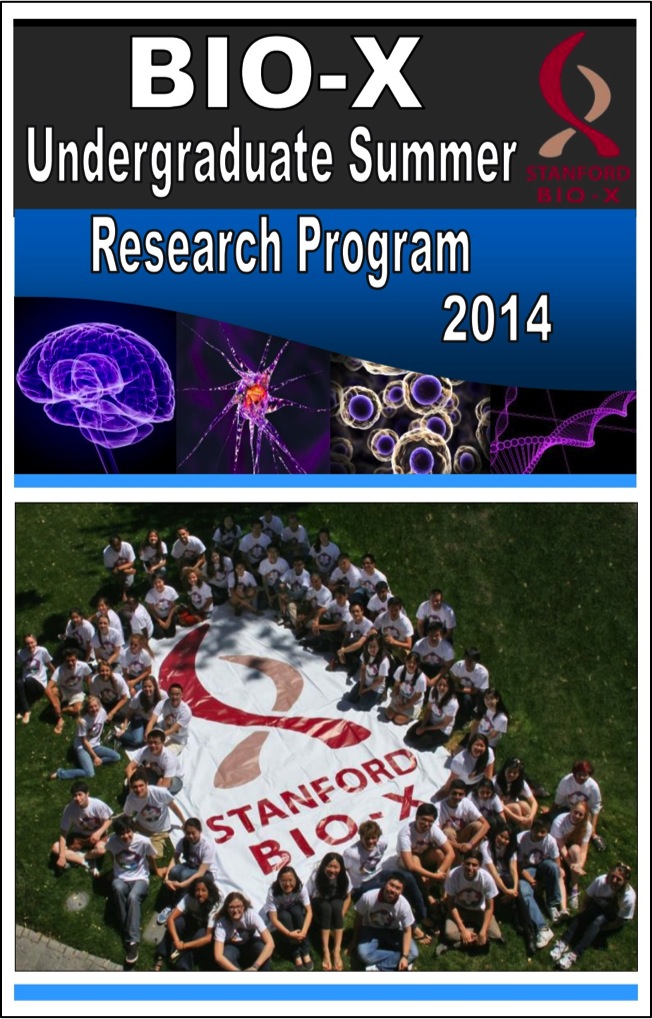 Bio-X UNDERGRADUATE SUMMER RESEARCH PROGRAM Bio-X UNDERGRADUATE SUMMER RESEARCH PROGRAMThe Bio-X Undergraduate Summer Research Program (USRP) supports undergraduate research training through an award designed to support interdisciplinary undergraduate summer research projects. The program is an invaluable opportunity for students to conduct hands-on research, learn how to carry out experiments in the laboratory, and develop the skills to read and analyze scientific literature. This program is eligible to Stanford students who want to work in the labs of Bio-X affiliated faculty. This year, nearly 160 students applied to the program, and 65 students were selected. Therefore, to date, 371 awards have been given to the Stanford undergraduate community to participate in the Bio-X Summer Research Program. The program for 2015 officially started last week. In addition, the Bio-X USRP Faculty Talks have begun, and take place every Wednesday from 12-1 pm until August 26, 2015. Please email Hanwei Li to learn more details and RSVP for any of the faculty talks. Participating undergraduates are also required to present poster presentations on the research that they've conducted during the program. The 2015 posters will be presented during the next Bio-X IIP Seed Grant Symposium on Wednesday, August 26, 2015. Please click here for title lists of past posters that our undergraduates have presented. |
We are cultivating and are highly successful in building meaningful collaborations with numerous corporate colleagues. New collaborations through our core programs are highly encouraged. To learn about how to get involved, please contact Dr. Hanwei Li, or Dr. Heideh Fattaey.
Bio-X also holds symposiums every year that highlight our core programs. The latest one was on February 25, 2015, where over 300 people attended Bio-X's latest Interdisciplinary Initiatives Seed Grants Program Symposium. There were 8 different oral presentations from faculty members who were awarded Bio-X Seed Grants on the progress that they have made with the funding towards their projects, as well as a packed poster session with 100+ research projects presented. Please stay tuned for future Bio-X symposiums that are coming up this year!
If you'd like to learn more about any of the projects that were presented during the entire symposium, please contact Dr. Hanwei Li with your questions.
News

 Low levels of hormone linked to social deficit in autism
Low levels of hormone linked to social deficit in autism
Bio-X Affiliated Faculty Karen Parker and Antonio Hardan
Bio-X NeuroVentures support project
A brain-chemistry deficit in children with autism may help to explain their social difficulties, according to new findings from the Stanford University School of Medicine. The research team found a correlation between low levels of vasopressin, a hormone involved in social behavior, and the inability of autistic children to understand that other people’s thoughts and motivations can differ from their own. The research was published July 22 in PLOS ONE. “Autistic children who had the lowest vasopressin levels in their blood also had the greatest social impairment,” said the study’s senior author, Karen Parker, PhD, associate professor of psychiatry and behavioral sciences. The findings raise the possibility that treatment with vasopressin might reduce social problems for autistic children who have low vasopressin levels, a hypothesis that Parker and her team are now testing in a clinical trial. However, the new research also showed that children without autism can have low vasopressin levels without displaying social impairment, Parker noted; in other words, autism is not explained by a vasopressin deficit alone.
 Stanford team's brain-controlled prosthesis nearly as good as one-finger typing
Stanford team's brain-controlled prosthesis nearly as good as one-finger typing
Bio-X Affiliated Faculty Krishna Shenoy
When we type or perform other precise tasks, our brains and muscles usually work together effortlessly. But when a neurological disease or spinal cord injury severs the connection between the brain and limbs, once-easy motions become difficult or impossible. In recent years researchers have sought to give people suffering from injury or disease some restored motor function by developing thought-controlled prostheses. Such devices tap into the relevant regions of the brain, bypass damaged connections and deliver thought commands to devices such as virtual keypads. But brains are complex. Actions and thoughts are orchestrated by millions of neurons – biological switches that fire faster or slower in dynamic patterns. Brain-controlled prostheses currently work with access to a sample of only a few hundred neurons, but need to estimate motor commands that involve millions of neurons. So tiny errors in the sample – neurons that fire too fast or too slow – reduce the precision and speed of thought-controlled keypads. Now an interdisciplinary team led by Stanford electrical engineer Krishna Shenoy has developed a technique to make brain-controlled prostheses more precise. In essence the prostheses analyze the neuron sample and make dozens of corrective adjustments to the estimate of the brain's electrical pattern – all in the blink of an eye.
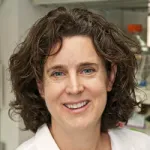 Researchers link HIV susceptibility to little-understood immune cell class
Researchers link HIV susceptibility to little-understood immune cell class
Bio-X Affiliated Faculty Catherine Blish
High diversity among certain cells that help fight viruses and tumors is strongly associated with the likelihood of subsequent infection by HIV, Stanford University School of Medicine researchers have found. Natural killer cells, or NK cells, are lymphocytes, a type of white blood cell. NK cells’ increased diversity, the scientists learned, may stem from prior exposures to viruses. The findings, described in a study published July 22 in Science Translational Medicine, could spur the development of blood tests capable of flagging individuals’ susceptibility to viral infection. The study also offers insights into the workings of NK cells, a somewhat poorly understood but crucial group of immune cells. “This puts NK-cell diversity on the map as a metric of immune function,” said Catherine Blish, MD, PhD, assistant professor of infectious diseases and geographical medicine and the study’s senior author. “But it was a first foray. Before we can say definitively that NK-cell diversity predicts a person’s susceptibility to infection, we need to validate these findings by looking at large numbers of individuals in a different population. “NK cells are particularly suited to detecting and demolishing virally infected or cancerous cells,” Blish added. “They arrive on the scene quickly, and they act quickly. An NK cell can kill an infected cell in 10 minutes.”
 Women’s immune system genes operate differently from men’s
Women’s immune system genes operate differently from men’s
Bio-X Affiliated Faculty Howard Chang
A new technology for studying the human body’s vast system for toggling genes on and off reveals that genes associated with the immune system toggle more frequently, and those same genes operate differently in women and men. Some genes are virtually always on, like the clock light on a microwave; others sit unused for years at a time, like some regrettable appliance you bought, stuffed into the back of the closet and forgot. Some genes can be always on in one person and always off in another. A minority of genes switch on and off, like a favorite cell phone app. A new technology, which makes it possible to study the molecules that regulate all of that switching in living people as they go about their lives, has revealed some intriguing surprises, according to a study from the Stanford University School of Medicine. One of those discoveries is that the genes that switch on and off differently from person to person are more likely to be associated with autoimmune diseases. Another is that women and men use different switches to turn on many immune system genes. It’s too soon to be sure, but that difference in activity might explain the much higher incidence in women of autoimmune diseases such as scleroderma, lupus and rheumatoid arthritis. “Part of why this is possible is a new technology that was invented at Stanford for measuring the accessibility of the genome to regulatory elements,” explained the study’s senior author Howard Chang, MD, PhD, professor of dermatology. The new technique, called ATAC-seq and developed by Chang’s team, lets researchers sample living cells in real time to see what they are up to. “In the past,” he said, “people needed a huge number of cells to do this kind of measurement. You’d actually need a pound of flesh to get certain rare cell types. So you can’t get that out of a live person — and certainly not more than once, right?”
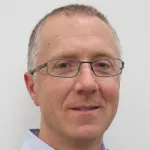 Stanford scientists devise method for rescuing genetic material from formaldehyde-treated tissue samples
Stanford scientists devise method for rescuing genetic material from formaldehyde-treated tissue samples
Bio-X Affiliated Faculty Eric Kool
Each year, millions of tissue samples are collected from cancer patients and preserved in formaldehyde. The chemical "freezes" the cancer cells within the sample, allowing physicians to look at the disease and plan a specific course of treatment. The process, however, coats the genetic material within the tissue, making it difficult to apply next-generation genetic analysis that could reveal better, personalized therapies. Now, a team of Stanford chemists and physicians has developed a technique that significantly improves the recovery of genetic material from those samples. "Pathologists used to just look at tissues under a microscope, so it didn't matter that formaldehyde was there," said Eric Kool, a professor of chemistry at Stanford and senior author on the study. "The trend now is to treat people based on their genetic situation, and the problem is, the formaldehyde gets in the way of this. We've found a way to reverse the process."

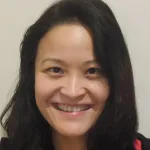 DNA damage seen in patients undergoing CT scanning
DNA damage seen in patients undergoing CT scanning
Bio-X Affiliated Faculty Joseph Wu and Patricia Nguyen
Using new laboratory technology, scientists have shown that cellular damage is detectable in patients after CT scanning, according to a new study led by researchers at the Stanford University School of Medicine. “We now know that even exposure to small amounts of radiation from computed tomagraphy scanning is associated with cellular damage,” said Patricia Nguyen, MD, one of the lead authors of the study and an assistant professor of cardiovascular medicine at Stanford. “Whether or not this causes cancer or any negative effect to the patient is still not clear, but these results should encourage physicians toward adhering to dose reduction strategies.” The study was published online July 22 in the Journal of the American College of Cardiology: Cardiovascular Imaging. Won Hee Lee, PhD, and Yong Fuga Li, PhD, both postdoctoral scholars, are the study’s other lead authors. “The use of medical imaging for heart disease has exploded in the past decade,” said Joseph Wu, MD, senior author of the study. Wu is a professor of medicine and of radiology and the director of the Stanford Cardiovascular Institute. “These tests expose patients to a nontrivial amount of low-dose radiation. But nobody really knows exactly what this low-dose radiation does to the patient. We now have the technology that allows us to look at very subtle, cell-level changes.”
Events
| Medicine Aug 5, 2015, 8 am - 9 am Li Ka Shing Building, Stanford, CA Opening the "Black Box" of Immunology in Medicine Speaker: Mark Davis, PhD, Stanford |
Immunology Aug 11, 2015, 4:15 pm - 5:15 pm Clark Center S361, Stanford, CA Computational and Systems Immunology Seminar: Title TBD, but focus on ATAC-seq, IncRNAs, epigenetics, development, aging Speaker: Howard Chang, MD, PhD, Stanford |
Resources
| Stanford University |
| Stanford Bio-X |
| Bio-X Seed Grants The Stanford Bio-X Interdisciplinary Initiatives Program (IIP) provides seed funding for high-risk, high-reward, collaborative projects across the university, and have been highly successful in fostering transformative research. |
| Office of Technology and Licensing "Techfinder" Search the OTL Technology Portal to find technologies available for licensing from Stanford. |
| Stanford Center for Professional Development - Take advantage of your FREE membership! - Take online graduate courses in engineering, leadership and management, bioscience, and more. - Register for free webinars and seminars, and gets discounts on courses. |
| Stanford Biodesign Video Tutorials on how FDA approves medical devices A series of video briefs recently produced by the Stanford Biodesign Program teaches innovators how to get a medical device approved for use in the United States. This free, online library of 60 videos provides detailed information on the Food and Drug Administration regulatory process, short case studies and advice on interacting with the FDA. |
To learn more about Stanford Bio-X or Stanford University, please contact Dr. Hanwei Li, the Bio-X Corporate Forum Liaison, at 650-725-1523 or lhanwei1@stanford.edu, or Dr. Heideh Fattaey, the Executive Director of Bio-X Operations and Programs, at 650-799-1608 or hfattaey@stanford.edu.

